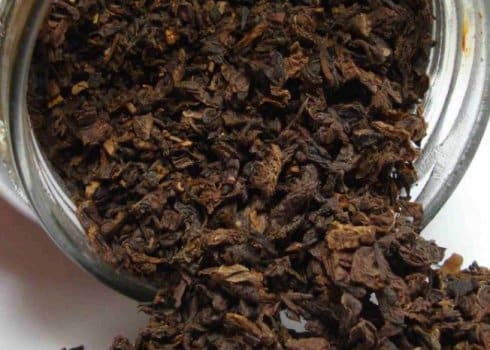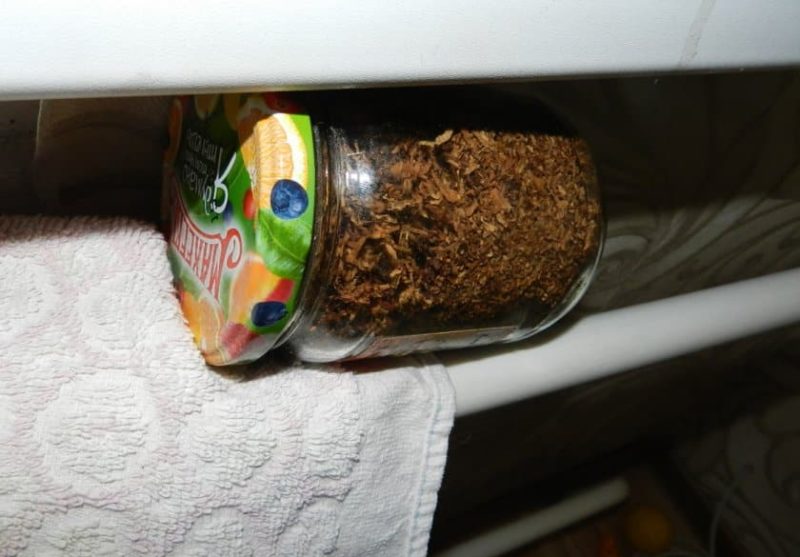Step-by-step instructions for fermenting tobacco on a battery at home
Due to rising prices for tobacco products and a significant deterioration in their quality, more and more people are switching to independent growing tobacco on your own plot. But growing and drying a plant is only part of the harvesting process. To obtain high-quality raw materials with excellent taste and aroma, it must be properly fermented.
What is fermentation and why is it needed?

It is important to properly prepare tobacco for the process fermentation. Initially, the leaves should be completely dry. At home, this is done using batteries or in the sun. The purpose of the procedure is to remove all moisture from the plant.
After proper drying, proceed to fermentation. During this process, tobacco acquires unique properties that greatly distinguish it from cigarettes.
Essentially, fermentation is a chemical process during which pectins, proteins and starchy substances are destroyed, thereby enhancing the taste and astringency of the finished raw material. That is, complex substances are converted into simpler ones with the subsequent release of nicotine and aromatic compounds. This can be done under certain conditions - when creating the necessary humidity and temperature.
In industrial production, the main fermentation process is as follows: tobacco leaves are collected in stacks (pylons) from 0.5 to 1 m high (the number of leaves in each of them reaches 1.5 thousand). Then they are sent to dark, closed rooms, where they are stored for a month.Cuban premium cigar manufacturers are required, for example, to carry out 2 tobacco fermentations.
Reference. Kentucky Burley and Jubilee New 142 tobacco varieties do not require fermentation; they are used immediately after drying. They contain few sugars and aggressive resins, so to improve the quality of the raw material, it is enough to dry it and then let it sit for a short time.
How does the taste of tobacco change?
Dried leaves can be crushed and used immediately, but raw materials prepared in the usual way (drying) will turn out to be too strong, unflavoured, and containing a large amount of nicotine. In addition, the chlorophyll that is in the leaves will simply burn and burn your throat.
The effect of fermentation on the taste of tobacco:
- Tobacco smoke does not taste bitter, as aggressive resins and essential oils are destroyed and its strength is reduced.
- Instead of a damp, grassy smell, a specific pleasant tobacco aroma appears, which is characteristic of everyone specific variety.
- The aftertaste is more pronounced.
The appearance of the leaves, their structure and quality changes:
- The light greenery remaining on the leaves after drying disappears. They turn brown and olive.
- They are stored well without being subject to fungal infections.
- The ability of tobacco leaves to absorb moisture from the air and retain it is significantly weakened.
- They tolerate transportation well.
- They smolder better.
How to ferment tobacco on a battery
It is believed that fermentation is the most difficult stage in preparing raw materials for use, which cannot be accomplished without special equipment. However, there are many ways to carry out the procedure at home. One of them is tobacco fermentation on a battery.
This is the simplest method, which does not require a special cabinet, electric heating devices, oven, etc.

Tobacco preparation
During the drying process, tobacco leaves lose almost all their moisture and therefore become very brittle. In order for fermentation to proceed successfully, the leaf material is sprayed - one press of the spray on the leaf.
Important! Raw tobacco should not be soaked, otherwise waterlogging will lead to the formation of mold.
After moistening, the tobacco is covered with a piece of cloth and left in this state for 2-4 hours, after which it becomes elastic.
Before fermentation, some tobacco growers separate the leaves from the veins, which are not thrown away, but are used as an environmentally friendly means to combat harmful insects.
Conditions for high-quality fermentation
For any biochemical processes, water is required as a medium for reactions to occur. Therefore, to activate enzymes, it is necessary that the humidity of the raw materials during the process is 60-70%, and the temperature does not exceed +45...+50°C.
At this stage you can flavor tobaccoby dissolving essential oils, cognac or honey in water. But at temperatures above +50°C, the destruction of the biological catalysts themselves will begin. Such conditions are also favorable for the appearance of mold on raw tobacco, so it is important that objects in contact with the leaves are sterile.
Step-by-step instructions for fermentation
When the leaves become elastic during the fermentation process and do not break when folded in half, perform the following steps:
- Use a dry towel to remove drops of water remaining after moistening from the leaves.
- Collect them in a stack, then roll them and cut them finely.
- Plastic bags or jars for fermentation are pre-treated with alcohol or vodka to prevent the appearance of mold.
- The raw materials are placed in a prepared container, filling it halfway, so that it is convenient to mix.
- The jar is closed with a metal lid and the bag is tied.
- Place it on the radiator and leave it for 2 weeks. At the same time, the container is turned over 3 times a day.
When heated to +50°C, condensation may form on the walls of the bag or jar. In this case, the raw tobacco is slightly ventilated and put back into fermentation. If the radiator temperature exceeds that required for the process to proceed, the container with raw tobacco is wrapped in a towel or any other thing.
What to do next
The fermentation process lasts from 7 to 14 days. Afterwards, the leaves are removed and allowed to rest for 1-2 days so that the tobacco becomes more aromatic and strong. Then they are dried slightly so that the leaves remain flexible and do not break at a break, but are dry to the touch. Such products can be used immediately or stored.
The longer tobacco is stored, the more aromatic it becomes, since the fermentation process in it does not stop. Paper bags or glass jars are used to store the mixture.
Advice and recommendations from experts
Experienced tobacco growers adhere to these rules:
- Before fermentation, green leaves with a burning smell, traces of rot or mold are thrown aside.
- On the 2-3rd day of the process, a faint honey aroma should appear. If it is not there, then the fermentation temperature is insufficient or excessive - adjust the heat supply.
- If you want to keep tobacco for longer than a year, use varieties of eastern selection.
- To reduce the strength and aroma of tobacco, after fermentation it is left to stand for 24 hours.
- Paper bags or glass jars are used to store the mixture. Sometimes rolled-up cigarettes are made from tobacco.
Conclusion
If you follow all the rules and recommendations for preparing raw materials, creating the necessary conditions for fermentation, and at the same time following the instructions for performing the process, then even a novice tobacco grower has the opportunity to obtain a high-quality product with an aromatic taste.